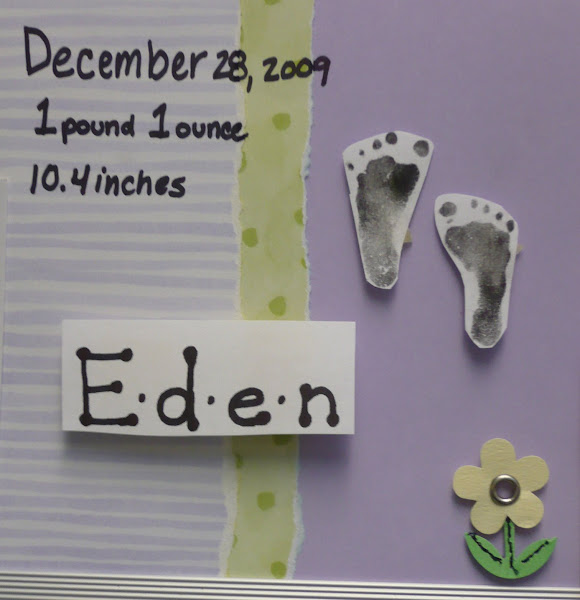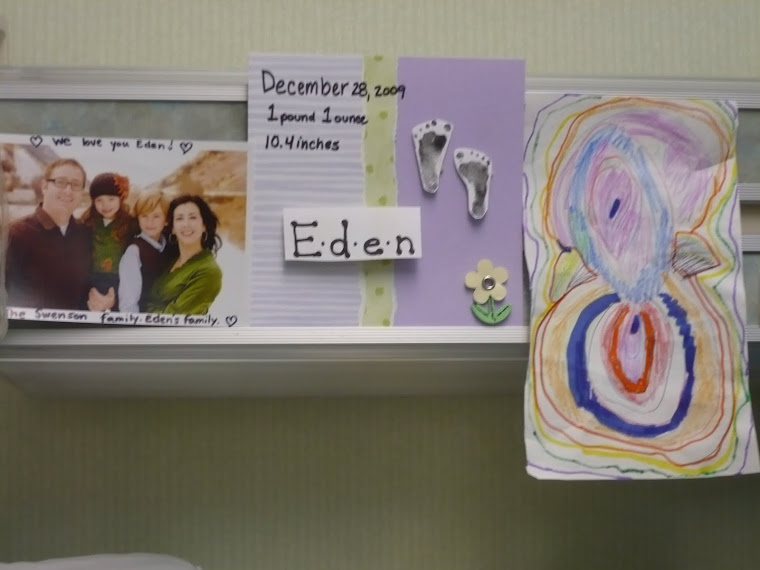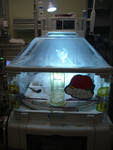 Many of you may be like Jeremy and I, "What is a micro preemie?" Well Eden is a micro preemie. Before she was born, we had never seen such a small and perfectly formed baby in real life. We didn't know that micro preemies existed. She amazes and inspires us.
Many of you may be like Jeremy and I, "What is a micro preemie?" Well Eden is a micro preemie. Before she was born, we had never seen such a small and perfectly formed baby in real life. We didn't know that micro preemies existed. She amazes and inspires us.From a medical website: "Preemie" is the common term used when referring to a premature baby. The dictionary definition of a preemie is “a prematurely born infant”. A preemie is born before 37 weeks gestation while a full term baby is born at 37 weeks or after. Preemies require a very different start in life, and this can vary dramatically depending on the level of prematurity. Micropreemie and preemie are the two terms used to help define the degree of prematurity.
To an NICU medical professional, a micropreemie or micro preemie is defined as a baby that is under 1 3/4 pounds (between 700-800 grams) and is generally born before 26 weeks gestation, but most people prefer to loosen this term up to include any baby under 3 pounds (1500 grams) or under 29 weeks gestation. Micropreemies require a lot of medical attention in order to survive, and many more micropreemies are surviving than ever before in history. The statistics for the survival of a micropreemie can range from 10-80%.
Some of the many difficulties that a micropreemie experiences are immature lungs, an underdeveloped digestive system, cerebral hemorrhaging, high risk of infection, incomplete feeding reflexes, severe anemia, neurological delays, physical handicaps, and long term health issues. Because of so many problems associated with being a micropreemie, medical intervention to keep micropreemies alive include biliblankets, blood pressure monitors, cardiac monitors, endotracheal tubes, isolettes, intravenous pumps & tubes, nasal CPAPs, nasal gastric tubes, nasal prongs, oxyhoods, oxygen saturation monitors, phototherapy lights, pulse oximeters, respiratory monitors, synthetic surfactant, temperature probes, UACs, ultrasounds, UVCs, and ventilators. So much more information is being made available to parents of micropreemies than ever before, allowing parents the opportunity to educate themselves on their micropreemie's needs.
Here are some websites to read inspiring micro preemie stories. Jeremy and I find the many stories in the preemie scrapbooks we read at the NICU and meeting other families of micro preemies that we gain a lot of information, and hope.




















No comments:
Post a Comment